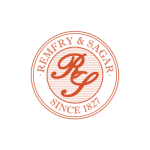“If you can’t make it good, at least make it look good” – the famous quote from Bill Gates seems to be the mantra of counterfeiters for all the wrong reasons. According to the International Trademark Association and the International Chamber of Commerce, the estimated global economic cost of counterfeiting and piracy could reach USD 2.3 trillion by the year 2022. Present throughout the entire spectrum of consumables (retail or commercial), counterfeits are alien to no sector. The automotive industry is no exception and equally marred with the pandemic (forgive the choice of words) of counterfeiting. From India’s perspective, the very size of its market makes it a host to a staggering USD 2.8 billion (INR 22,000-crore) counterfeit auto-parts industry.
Tools of the trade
While counterfeits of nearly all automobile brands are available, their market shares differ. The formula is fairly simple, the brands with the highest market share are natural favourites with counterfeiters. Simple to manufacture components like brake shoes/pads, clutch plates, air filters and wipers enjoy production/assembly in India, with most of the manufacturing units operating out of garage-sized premises as opposed to the state of the art facilities of brand owners. Complex parts find their way into India by way of exports from neighbouring countries with a more robust manufacturing infrastructure. These parts, guided by demand, are then made available anywhere in the country. The e-commerce era also facilitates trade, with counterfeit spares available on online platforms and perpetrators operating under the comfort of anonymity.
Brand owners most affected by this malevolent trade have strained to develop and employ counterfeit identifying features on packaging and where possible on the products themselves. Development of technology has spawned many innovative add-ons such as holograms, photosensitive etching/inks, QR codes, tamper proof seals/stickers, which, coupled with creative batch/manufacturing codes and at times basic textual prints/patterns obvious only to a trained eye, appear on the packaging of original spares. Brand owners have become very active in this department and often changes to packaging are introduced every few months. The introduction of similar features on counterfeits takes away from profit margins. Counterfeiters closely follow their favoured brands, and imitations of the identifying features are quick to appear as well.
The underlying sentiment guiding counterfeiting in the automotive sector is no different from other sectors. However, the consequences arising out of use of counterfeit auto spares can be potentially disastrous. Not conforming to any established standards or safety regulations, counterfeit spares employ use of inferior material and when exposed to intense conditions of speed, temperature etc. can lead to automobile failure. Reports indicate that use of counterfeit spares contribute to 20% of road accidents in India.
In the arena of aftermarket sales, the question of whether one is restricted to OEM parts does not need an answer. Blatant copies can confuse even the most well-intentioned consumers. The causalities of this trade are many and end consumers are the most vulnerable.
A legal perspective
The law for combating the menace of counterfeiting is in place. The Indian Penal Code, the trademark and copyright statutes, all are sufficiently armed in this regard. The required deterrence, however, is missing. The problem is twofold. Firstly, though a number of raids under the penal provisions of IP legislation are undertaken across the country every year, these are not enough to quell the problem. Plagued by a backlog of investigations involving heinous offences and other pressing assignments, law enforcement agencies are overstretched much of the time, and complaints regarding misuse of IP often do not get the kind of attention that brand owners would like. The second and more important factor is post seizure prosecution which on its own standing tends to be weak leading to a low conviction rate. Where convictions do take place, the sentencing is not stringent enough and many times confined to fines. Without the necessary deterrence and fuelled by lucrative profits, the trade thrives.
The government is cognisant of the issues at hand and proactively engages with industry for launch of consumer awareness campaigns from time to time. A legislation requiring affixing of microdots on vehicles and their parts is also on the cards and will be the latest addition to the armoury of technology led solutions. Independent brand owners too spearhead initiatives educating consumers on not just the hazards that use of counterfeit spares pose but also on how such use proves more expensive in the long run.
From a legal perspective, brand owners need to have a dynamic enforcement strategy in place. Introduction of advanced security features, as discussed above, should be an ongoing initiative. Regular field monitoring by way of investigations and/or surveys lies at the heart of an effective anti-counterfeiting strategy. It is also extremely important for brand owners to follow through on their actions. Rendering support to the prosecution in post seizure proceedings will increase the chances of conviction and add to the deterrence factor. It is equally important that members of the trade and public are made aware of actions taken by the brand owner by way of caution notices, newsletters etc.
A brand owner’s perseverance in diligently prosecuting misuse can go a long way in making the brand unpopular amongst counterfeiters. MONITOR- ACT - REPEAT is a slogan that needs to be remembered.












